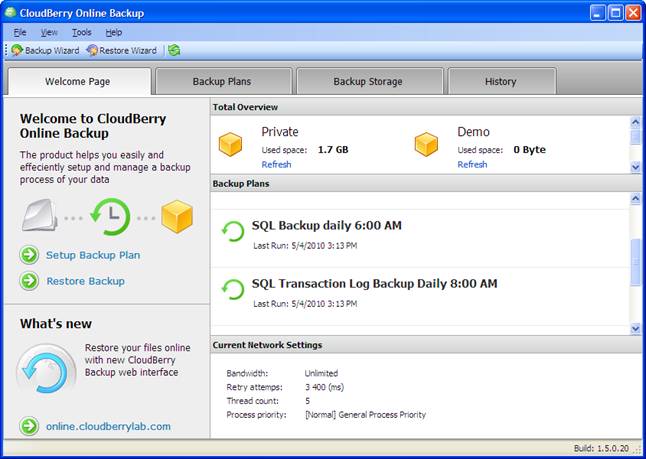

- #Cloudberry backup to amazon cloud how to#
- #Cloudberry backup to amazon cloud install#
- #Cloudberry backup to amazon cloud pro#
- #Cloudberry backup to amazon cloud software#
With Freeware version, we can manage data volumes up to 200 GB.
#Cloudberry backup to amazon cloud pro#
There are two versions available for us to use:įreeware version - Available for personal use & comes with most features available in PRO version like flexible scheduler, retention policies, schedules backups, incremental backups, block level backups, email notifications, local backup, network location backups, symlinks support, CLI & Web interfaces. As for restoration, we can restore data on the same or different machine, we can schedule the restore operation at any time we want, we can select the point in time to restore and CloudBerry Backup can also restore the symbolic links of our Linux systems. we can use it to backup modified files & we can also backup network locations like NAS, mapped drives etc with it. When the application starts, select the option highlighted in this image and click Next.It supports incremental backups i.e.
#Cloudberry backup to amazon cloud how to#
The following images show a step-by-step process of how to use it for the very first time on that Linux desktop. To start using the graphical user interface of CloudBerry Backup on Kubuntu 17.10, click on its entry in the Internet applications menu category. How to use the graphical interface of CloudBerry Backup on Kubuntu 17.10 is the subject of the next section. There should also be a command line interface named cbbCommandLine installed into the /opt/local/CloudBerry Backup directory. If installation completes without an error, an entry named CloudBerry Backup should appear in the Internet applications menu category.
#Cloudberry backup to amazon cloud install#
Then navigate to the directory where the file was saved into and type the following command to install it: sudo dpkg -i CloudBerryBackup_v2.2.deb. Click on the DOWNLOAD FREE TRIAL button on that page and save the downloaded file under a name like CloudBerryBackup_v2.2.deb.

The first task in the installation process involves downloading the. The instructions and commands in this section show how to install CloudBerry Backup on Kubuntu 17.10, but because that distribution is based on Ubuntu, you can also use the commands to install it on that distribution or any distribution derived from it. How to accomplish that is the subject of the next section. You’ll need the access and secret keys of the IAM user further down in this article, so make a note of them.Īside from an Amazon AWS account, you’ll need CloudBerry Backup installed on your Linux desktop to complete this tutorial. And be sure to set up an AWS Identity and Access Management (IAM) user, generate the access and secret keys for the user and create the bucket that you’ll like to use to backup your files. Therefore, to follow along with this tutorial, sign up for a free tier account by visiting the previous link. A Kubuntu 17.10 desktop was used as the test system for this article, but the instructions should work for a recent Linux desktop based on Debian or Ubuntu.Īmazon S3 is a scalable cloud storage component of Amazon Web Services (AWS) platform, so you’ll need an Amazon AWS account to complete this tutorial.
#Cloudberry backup to amazon cloud software#
In this article, you’ll learn how to use CloudBerry software for Linux cloud backup to back up your files on a Linux desktop to an Amazon S3 bucket. The Pro and Ultimate versions are available with a 15-day trial, but the Freeware edition is completely free to use, though it lacks support for encryption and compression, two features available in the Pro and Ultimate editions.Ī couple of article I’ve written about CloudBerry Backup showed how to use it to backup Linux files to a Minio storage server and to a Wasabi storage server. CloudBerry Backup, is a cloud backup software with support for 256-bit AES encryption, image-based backup and data deduplication.


 0 kommentar(er)
0 kommentar(er)
